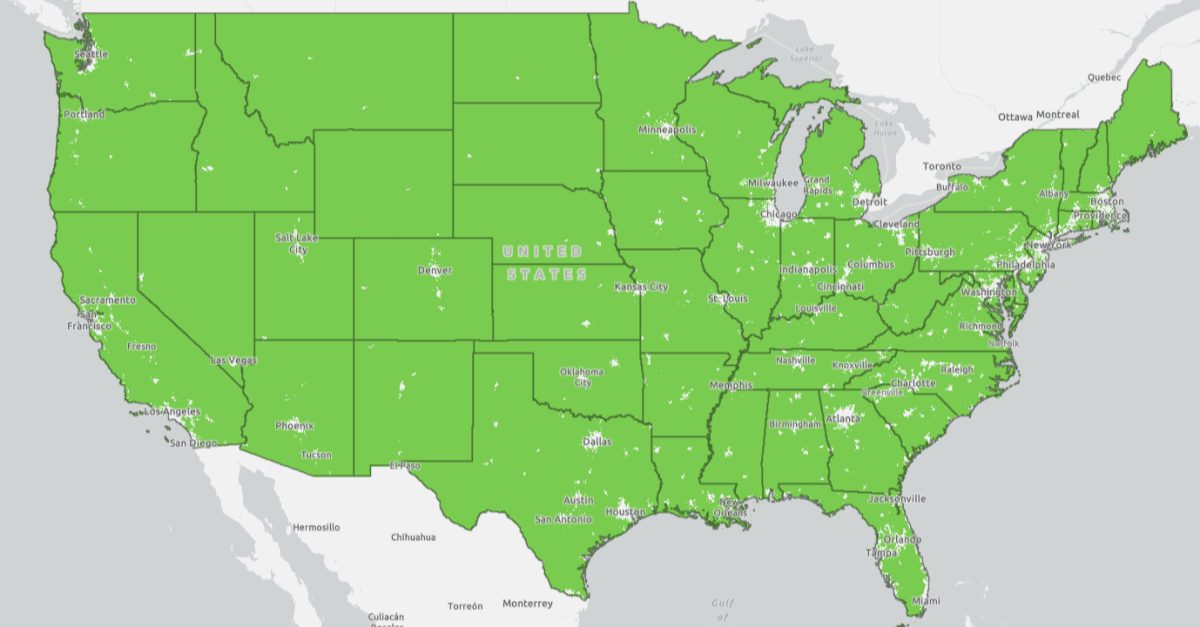Rural Designations in the Summer Meal Programs
January 19, 2024
Summary
This memorandum is updated to include revisions to the definition of rural as provided in the interim final rule, Establishing the Summer EBT Program and Rural Non-Congregate Option in the Summer Meal Programs. The revised definition allows the use of multiple recognized federal definitions and classifications to designate areas as rural without further USDA approval, as well as the option for state agencies, with Food and Nutrition Service Regional Office (FNSRO) approval, to identify additional pockets that are rural in character based on other data sources.
Why It Matters
The revised definition of rural will decrease the administrative burden on sponsoring organizations and state agencies to identify and approve sites. The expansion of the definition also designates more areas as rural, and therefore makes more sites eligible to operate rural non-congregate programs.
Rural Designations in the Summer Meals Programs
The interim final rule established an effective period for rural designations. Under the new program requirements, once a site establishes its rural designation through any of the means described below, the designation is effective for a period of 5 years from the date of determination. At the discretion of the state agency, redetermination prior to the 5-year period may be required, if the state agency determines that an area’s rural status has changed significantly since the previous determination.
Rural Definition
Prior to the interim final rulemaking, the previous program definition of rural was based solely on the Office of Management and Budget’s (OMB) standards for delineating core-based statistical areas (CBSA), specifically metropolitan statistical areas (MSA). Under the previous policy, rural was considered any area in a county which is not a part of an MSA (i.e., non-metro area/county), or any “pocket” within an MSA which, at the option of the state agency and with FNSRO concurrence, was determined to be geographically isolated from urban areas. This definition presented challenges as MSAs often encompass areas that are considered rural based on additional information such as data at the census tract level. In addition, the definition did not set consistent standards for identifying and approving rural “pockets” across regions and states. Through the interim final rule, FNS expanded the definition of rural to include several recognized federal definitions and classifications to more effectively identify rural populations and territories within metropolitan areas and geographical areas below the county level. FNS also modified the rural pocket identification process to create a standard for the program.
Under the newly revised definition, rural means:
- Any area in a county which is not a part of a Metropolitan Statistical Area based on the Office of Management and Budget's Delineations of Metropolitan Statistical Areas;
- Any area in a county classified as a non-metropolitan area based on USDA Economic Research Service's Rural-Urban Continuum Codes and Urban Influence Codes;
- Any census tract classified as a non-metropolitan area based on USDA Economic Research Service's Rural-Urban Commuting Area codes;
- Any area of a Metropolitan Statistical Area which is not part of a Census Bureau-defined urban area;
- Any are of a state which is not part of an urban area as determined by the secretary;
- Any subsequent substitution or update of the aforementioned classification schemes that federal governing bodies create; or
- Any "pocket" within a Metropolitan Statistical Area which, at the option of the state agency and with FNSRO approval, is determined to be rural in character based on the other data sources.
Data Sources
Office of Management and Budget’s Standards for Delineating Core based Statistical Areas
A Metropolitan Statistical Area (MSA) is defined by the Office of Management and Budget (OMB) as a location where there is at least one urbanized area of 50,000 or more people, plus adjacent territory, which has a high degree of social and economic integration with the core as measured by commuting ties, based upon census data. For more information, see OMB Bulletin No. 23-01, Revised Delineations of Metropolitan Statistical Areas, Micropolitan Statistical Areas, and Combined Statistical Areas, and Guidance on Uses of the Delineations of These Areas, July 21, 2023, at https://www.whitehouse.gov/wp-content/uploads/2023/07/OMB-Bulletin-23-01.pdf.
USDA Economic Research Service’s Rural-Urban Continuum Codes
The Rural-Urban Continuum Codes (RUCC) form a classification approach that distinguishes metropolitan counties by the population size of their metro area, and nonmetropolitan counties by degree of urbanization and adjacency to a metro area. The official OMB metro and nonmetro categories have been subdivided into three metro and six nonmetro categories. Each county in the U.S., municipio in Puerto Rico, and Census Bureau designated county-equivalent area of the Virgin Islands/other inhabited island territories of the U.S. is assigned one of the 9 codes. More information on the RUCC codes and classifications can be found on ERS’ website: https://www.ers.usda.gov/data-products/rural-urban-continuum-codes/.
USDA-ERS' Urban Influence Codes
The Urban Influence Codes (UIC) were developed by ERS to capture differences in economic opportunities among counties. The UIC are based on OMB’s delineation of Metropolitan (metro) and Micropolitan (micro) statistical areas; micropolitan areas are further classified by adjacency and noncore nonmetro counties are classified by adjacency and population of the county’s largest town. More information on the RUCC codes and classifications can be found on ERS’ website: https://www.ers.usda.gov/data-products/urban-influence-codes/.
USDA-ERS’ Rural Urban Commuting Area codes
The Rural Urban Commuting Area (RUCA) codes were first developed by USDA-ERS and the Federal Office of Rural Health Policy in collaboration with the WWAMI Rural Health Research Center to provide a detailed and flexible approach to delineating sub-county components of rural and urban areas. These codes are based on the same assumptions used by the OMB to define county-level metropolitan and micropolitan areas. In total there are 10 codes, which offer a straightforward classification of metropolitan and nonmetropolitan areas based on the size and direction of primary commuting flows. More information on the RUCA codes and classifications can be found on ERS’ website: https://www.ers.usda.gov/data-products/rural-urban-commuting-area-codes/.
U.S. Census Bureau’s Urban Areas and the National Center for Education Statistics’ (NCES) Locale Classifications and Criteria
The Census Bureau defines geographical areas of the U.S. and its territories as urban and rural to meet the analysis needs for urban and rural communities. Following each decennial census, the Census Bureau applies the specified criteria of their classification to decennial census data to delineate geographical areas which qualify as urban. Rural is then designated as any population, housing, and territory not included within an urban area. Census Bureau’s delineation of urban and rural areas aides federal and state agencies in allocating program funds and implementing aspects of their various programs. These delineations also serve as the basis of setting program standards, such as OMB’s delineation of core based statistical areas and NCES’ locale classifications. More information on the Census Bureau’s urban-rural classification can be found on the U.S. Census Bureau’s website: https://www.census.gov/programs-surveys/geography/guidance/geo-areas/urban-rural.html.
The NCES locale framework was developed to provide a general indicator of the type of geographic area where a school is located to support research, analysis, and sample design. NCES classifies all territory in the U.S. into four types – Rural, Town, Suburban, and City, and each type is divided into three subtypes based on population size or proximity to populated areas. The classifications rely on standard urban and rural designations defined by the U.S. Census Bureau. Areas classified as rural under the NCES locale framework are Census-defined rural territory which have been classified into subtypes based on their size and proximity to a Census-defined urban area. More information on the NCES Locale Classifications can be found on NCES’ website: https://nces.ed.gov/programs/edge/Geographic/LocaleBoundaries.
Please note, under the revised program definition of rural, any area of an MSA not part of a Census Bureau-defined urban area may be considered rural. This criterion will allow for areas located within a metro area that are classified as rural according to the Census Bureau’s urban-rural classification or NCES’ Locale Classification and Criteria to be designated as rural under the program.
The data sources listed above are generally updated on a decennial basis (i.e. every ten years) following the decennial census. FNS will provide additional guidance to reflect such updates as needed, as specified in regulations.
Rural Pockets
In some cases, a proposed site may be located within a “pocket” within an MSA that is rural in character but not indicated as rural on the FNS Rural Designation Map. In these instances, state agencies can identify a data source indicating that the site is located in a rural area and provide that information to their FNSRO to seek rural designation approval. Per paragraph (7) of the rural definition in 7 CFR 225.2, FNS will approve exceptions to areas that otherwise do not meet the requirements of the default rural definition, if deemed appropriate, if the area is determined to be rural in character based on other data sources. The state agency must maintain documentation of the approval, and seek renewal at least once every five years, like all other rural sites.
For proposed sites that serve American Indian and/or Alaska Native children, state agencies may permit rural pocket designation for proposed site(s) located on a Tribal reservation, on trust land, or in an Alaska Native village by submitting documentation from a Tribal authority which certifies that the proposed site is located in a rural pocket. These designations must be submitted to the FNSRO but will receive expedited review for regional office approval. This policy supports the expansion of access to SFSP and SSO to American Indian and Alaska Native children.
If a proposed site was considered rural for SFSP purposes in the past, but the map does not reflect that designation, the state agency is encouraged to identify additional data source(s) that indicate that the site the area is located in is rural in character and consult the appropriate FNSRO.
Accessing the Data and Designating Areas
The FNS Rural Designation Map has been updated to reflect all federal definitions and classifications identified under the definition of rural to designate rural areas. State agencies must use information contained in the FNS Rural Designation Map (or use the most current versions of the allowable datasets) as a resource to make designations as it will reflect the latest acceptable data sources. On the map, a location shaded as green indicates a rural area. A location unshaded, meaning not colored green, indicates a non-rural area.
Please note that because of the specificity of using datasets which classify geographical entities below the county level based on population data, in rare instances, some areas on the FNS Rural Designation map (specifically public parks and other discrete spaces located in urban areas where the local population does not reside) may be indicated as rural when in practice they are not. State agencies should not approve sites in such locations for non-congregate service. State agencies should exercise careful judgment to assess whether the proposed site(s) will serve a rural population, and are strongly advised to consult with their FNSRO regarding any questions related to these potential circumstances.
Further information and instructions for using the map are available on the map link at https://www.fns.usda.gov/sfsp/rural-designation.
Read the full guidance: Rural Designations in the Summer Meal Programs – Revised (SFSP 04-2024, SP 06-2024).

